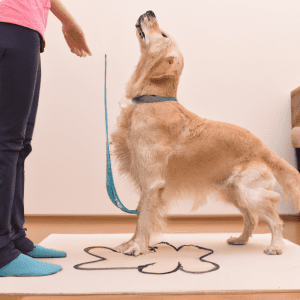what makes a good dog trainer?
A good dog trainer is someone who has both a passion for helping animals and the knowledge and skills to successfully teach them. They must understand the psychology of dogs and be able to communicate effectively with them.
They must be patient and have the ability to assess a dog’s individual personality and strengths. The best dog trainers also have the capacity to motivate and inspire both the dog and their owners. They must have the capacity to work with a variety of breeds and temperaments and possess the skills and knowledge to modify behavior in a way that is both humane and effective.
The Essential Skills and Qualities of a Good Dog Trainer
Good dog trainers have a wide range of skills and qualities that allow them to be successful at their job. Here are a few of the most important skills and qualities of a good dog trainer: Patience: A good dog trainer needs to have a lot of patience.
Training a dog can be time-consuming, and it can be frustrating when your pup doesn’t understand what you’re trying to teach them. It’s important for a dog trainer to remain calm and patient with their pup so that the dog doesn’t become anxious or confused.
- Knowledge: A good dog trainer needs to have extensive knowledge of canine behavior and training techniques. They need to understand how dogs learn, and which techniques are most effective for different breeds and personalities.
- Communication Skills: A good dog trainer needs to be able to communicate effectively with both the dog and its owner. They need to be able to clearly explain what they are trying to teach the dog, and be able to understand the needs and wants of the owner.
- Empathy: A good dog trainer needs to have empathy and compassion for the dogs they are training. They need to be able to relate to the dog and understand how they are feeling in order to be successful at their job.
- Creativity: A good dog trainer needs to be creative and think outside the box when it comes to training methods. They need to be able to come up with new and innovative ways to get their pup to learn and understand the commands they are being taught. These are just a few of the essential skills and qualities of a good dog trainer. With the right attitude, knowledge, and skills, any dog can be successfully trained.
Developing a Positive Training Environment for Optimal Results
Creating a positive training environment is essential for achieving optimal results. It may seem like a daunting task to develop a positive environment, but with a few simple steps, you can easily set yourself up for success.
First, be sure to make the training fun. It’s important to keep the energy level up and make sure everyone is engaged. This means providing activities that are both challenging and entertaining. For example, if you’re teaching a class on leadership, you could have participants complete a puzzle that requires them to work together to solve it. Or you could have them play a game that encourages collaboration.
Next, make sure your training space is comfortable and inviting. The room should be well-lit and spacious. The chairs should be comfortable and the tables should be arranged in a way that encourages collaboration. And don’t forget to bring snacks and drinks! This will help keep everyone energized and motivated. Finally, it’s important to provide clear instructions and expectations.
Make sure everyone knows what’s expected of them and how the training will progress. This will help ensure that the training is successful and that participants are able to achieve the desired results. By following these simple steps, you can create a positive training environment that will help your participants reach their goals. With a little bit of effort, you can ensure that everyone is engaged and having fun while learning.
Teaching Dogs the Basics: From Sit to Stay
Teaching your pup the basics is a great way to set up a strong foundation for a happy and healthy relationship. From sit to stay, here’s how to get your pup on the path to obedience. Sit: Start with a treat in your hand (or close to your pup’s nose).
Hold the treat up and say “sit”. As soon as your pup’s rear hits the ground, give him the treat. Praise him and repeat the process. Down: This is similar to sitting, but your pup should lie down instead. Hold the treat near his nose, and say “down” as you move it towards the floor. Once your pup is laying down, give him the treat. Praise him and repeat. Stay: After your pup has sat or lain down, take a few steps back and say “stay”.
If your pup remains in the same spot, give him a treat and praise him. If he stands up or moves, repeat the stay command and start over. Once your pup has mastered the basics, you can start introducing more commands. With patience and consistency, your pup will be a well-behaved four-legged friend in no time!
Establishing Good Communication Between Dog and Trainer
Good communication between a dog and its trainer is essential for a successful training session. If a dog and its trainer don’t understand one another, the dog won’t learn anything, and the trainer won’t be able to effectively teach the dog the desired behaviors.
The first step in establishing good communication between a dog and its trainer is to create a bond. This means spending time together and getting to know each other. The more time that is spent together, the more the trainer and dog will learn about one another and the more trust will be built. The next step is to learn how to communicate with the dog. One way to do this is by using positive reinforcement.
This means rewarding the dog for desired behaviors and ignoring undesired behaviors. For example, if a dog is sitting, the trainer could give it a treat and praise it for sitting. This will let the dog know that it is doing something right and that it should keep doing it.
The next step is to use clear commands. This means using the same word or phrase for the same behavior each time. For example, if the command “sit” is used, then that should be the only word used to mean “sit”, and it should be used consistently.
This will help the dog understand what is being asked of it. Finally, it is important to be consistent. This means doing the same thing each time the same behavior is asked of the dog. For example, if the command “sit” is used, then the same reward should be given each time the dog sits.
This will help the dog understand that the behavior is expected and that it will be rewarded for doing it. Good communication between a dog and its trainer is essential for a successful training session. By spending time together, using positive reinforcement, giving clear commands, and being consistent, the bond between the dog and trainer will grow, and the dog will learn the desired behaviors quickly and easily.
Understanding Dog Psychology: Knowing When to Push and When to Back Off
Understanding dog psychology can be tricky, but it’s an important part of being a responsible dog owner. Knowing when to push and when to back off is key to having a healthy relationship with your pup.
Here’s some advice on how to read your pup’s psychology and know when it’s time to push and when to back away. First, it’s important to pay attention to your pup’s body language. If they’re looking tense or uncomfortable, it’s a sign that they’re not ready to push forward.
Back off and give them some space. If they’re relaxed and happy, that’s a sign that they’re ready for more. Second, consider your pup’s personality. If they’re timid and shy, it’s best to avoid pushing them and instead move at their own pace.
On the other hand, if they’re bold and confident, it’s ok to push them just a little bit. Third, be aware of the context. If you’re introducing your pup to a new situation, it’s important to take it slow and not push them too hard.
This is especially true if they’re around other dogs or people. Finally, be consistent. Dogs respond best to consistency, so it’s important to keep your expectations clear and stick to them. If you’re firm but fair, your pup will learn quickly and be more willing to push when it’s appropriate.
Understanding dog psychology can be tricky, but it’s an important part of being a responsible dog owner. Knowing when to push and when to back off can help you build a positive relationship with your pup.
Pay attention to their body language, consider their personality, be aware of the context, and stay consistent. With a little patience and understanding, you’ll be able to determine when it’s time to push and when it’s time to back off.
Making Training Rewarding and Fun for Both Dog and Trainer
Training your dog can be a rewarding and fun experience for both you and your pup. Here are some tips to help you make the most of your time together.
- Make training a game. Dogs love to play and will respond positively to activities that are seen as playtime rather than as instruction. Make it a fun experience by using rewards, such as treats, to encourage them to complete tasks.
- Use positive reinforcement. Praise your pup for a job well done and reward them with treats or toys to keep them motivated. Avoid scolding or punishing them, as this can create a negative and discouraging environment for both the trainer and the dog.
- Use short, consistent sessions. Dogs have short attention spans so keep your training sessions short and consistent. This will help to keep your pup’s focus and ensure that they remain engaged throughout the training session.
- Be creative. Mix up your training routine to keep your pup excited and engaged. Try out different activities, such as agility or trick training, or use different rewards or toys to keep their interest.
- Have fun. Enjoy spending time with your pup and take breaks when needed. Training should be a time to bond with your pup and build a strong relationship. By following these tips, you can make training a rewarding and fun experience for both you and your pup. With patience and consistency, you can help your pup learn the skills they need to become a well-behaved and happy companion.
A good dog trainer is someone who understands the importance of positive reinforcement, consistency, and patience. They should be knowledgeable and patient, and they should have the skills to effectively communicate with both the dog and owner.
A good dog trainer will understand the science behind canine behavior and will be able to apply it to their training in a way that is both effective and fun. Ultimately, a good dog trainer will be passionate about helping both people and dogs reach their goals.




